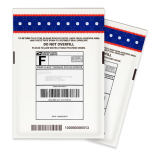What To Do with Unwanted Household Medicines
When household medicines are no longer wanted, EPA encourages you to use drug take-back programs. These take-back programs offer a safe and environmentally protective way to dispose of unwanted household medicines. EPA recommends the following:
On this page:
Five Options for Household Medicine Take-backs
Households have several options for properly disposing of unwanted household medicines using drug take-back programs.

1. Drug Enforcement Administration Take-back Days. Find a local law enforcement agency that is participating in the DEA’s twice-a-year National Prescription Drug Take-back Days in April and October. Check DEA's website. DEA Take-back Days also accept over-the-counter medications.

2. Kiosks at Pharmacies. Find year-round household pharmaceutical collection locations in your community with DEA's authorized collector locator. These DEA authorized collectors, such as pharmacies at retail stores or hospitals, install collection kiosks (that often resemble mail drop-off boxes) where the public can drop off unwanted household medicines. As of 2019, 71 percent of the U.S. population lives less than five miles from a permanent collection site, and in 42 states, at least half of the population lives within five miles of a site (per this Government Accountability Office Report (pdf)(1 MB). You can also go to an online mapping service and type in "drug disposal near me" or "medication disposal near me" to find your nearest drug disposal site.
3. Kiosks at Law Enforcement Agencies. Check with your local law enforcement agency to find out if they have a permanent kiosk available.

4. Mail-back Envelopes. Use a postage-paid, pre-addressed mail-back envelope for mailing back your unwanted household medicines for proper disposal. They are available for purchase at many retail pharmacies. Some retailers, community organizations, and states provide the mail-back envelopes for free.

5. Community Take-backs. Community groups may sponsor or coordinate pharmaceutical take-back events. These are often one-day or short-term collection events. DEA regulations require that law enforcement be present during these events.
If There Are No Take-back Options Available
If there are no take-back options available, households can use the steps below for household disposal. It not necessary to buy a specific product for this purpose. You can use common household items to make the drugs harder to access in the trash.
| Steps | Visuals |
|---|---|
| 1. Take your prescription drugs out of their original containers. |

|
| 2. Mix drugs with an undesirable substance, such as cat litter or used coffee grounds. |

|
| 3. Put the mixture into a disposable container with a lid, such as an empty margarine tub, or into a sealable bag. |

|
| 4. Conceal or remove any personal information, including Rx number, on the empty containers by covering it with permanent marker or duct tape, or by scratching it off. |

|
| 5. The sealed container with the drug mixture, and the empty drug containers, can now be placed in the trash. |

|
These steps are from our fact sheet How to Dispose of Medicines Properly (pdf)(194 KB).
The #5 amber vials typically used for prescriptions are not recyclable in most areas of the U.S. and can be placed in the trash. However, check your local guidelines for which plastics are recyclable in your area.
